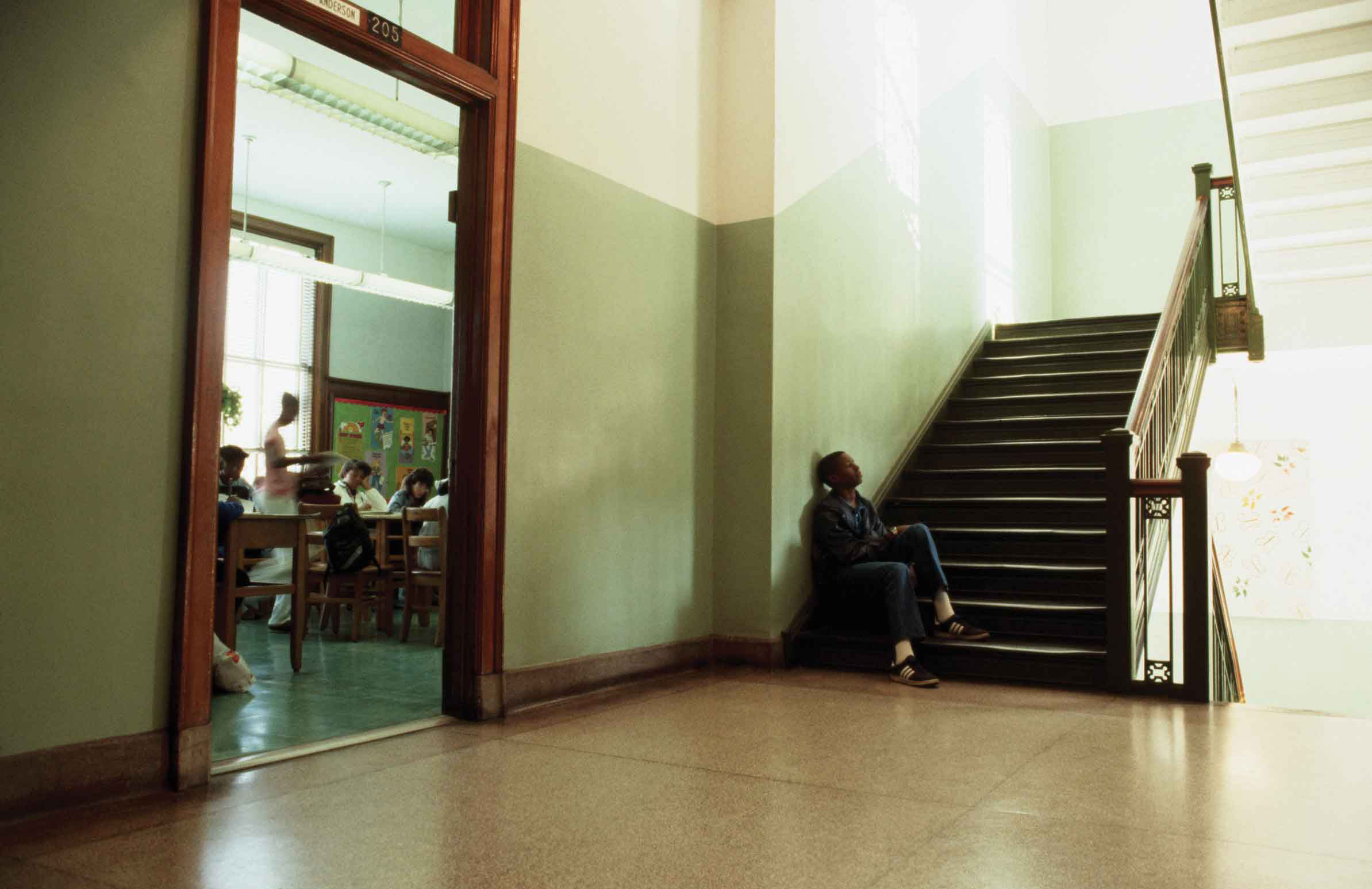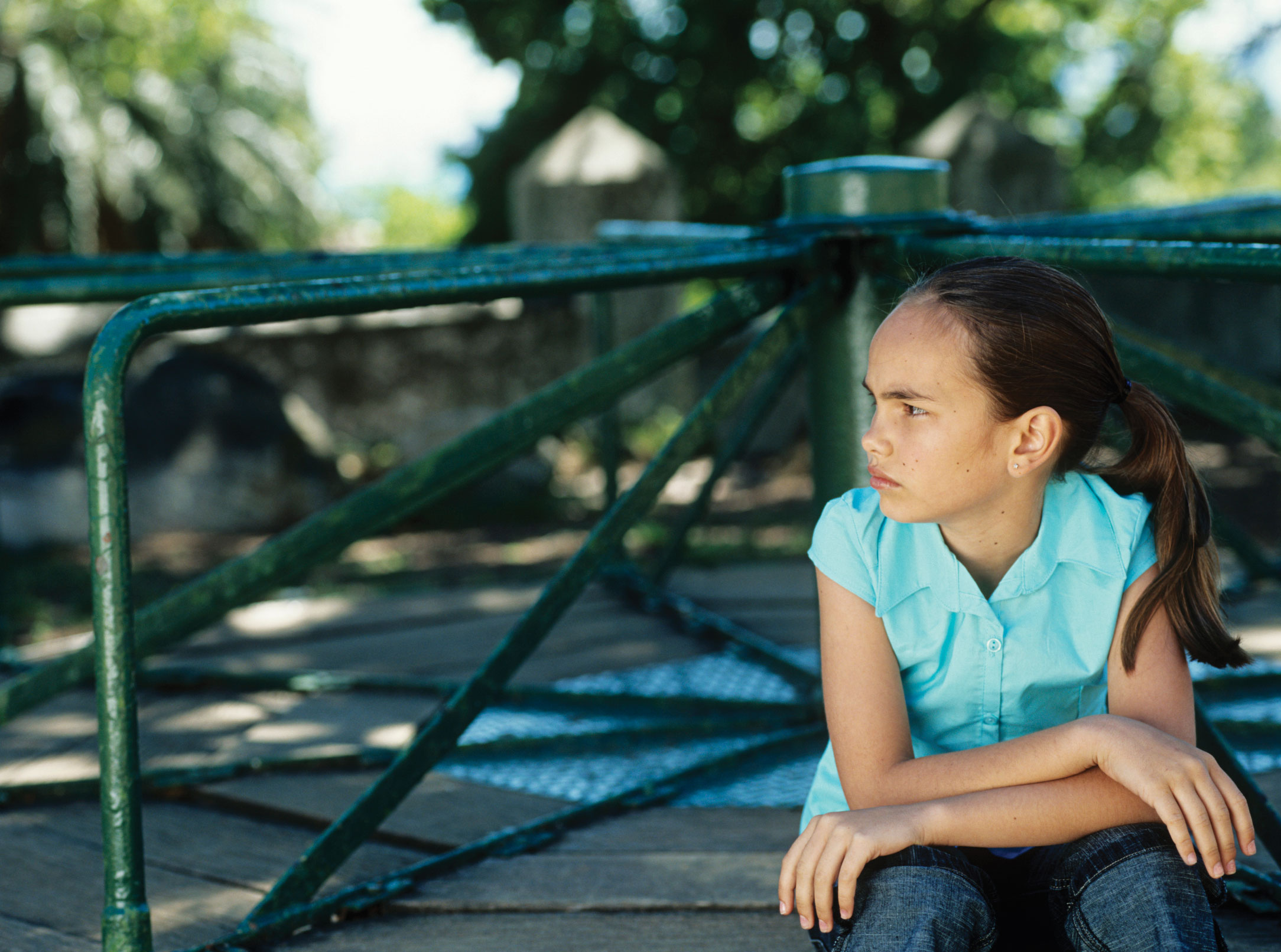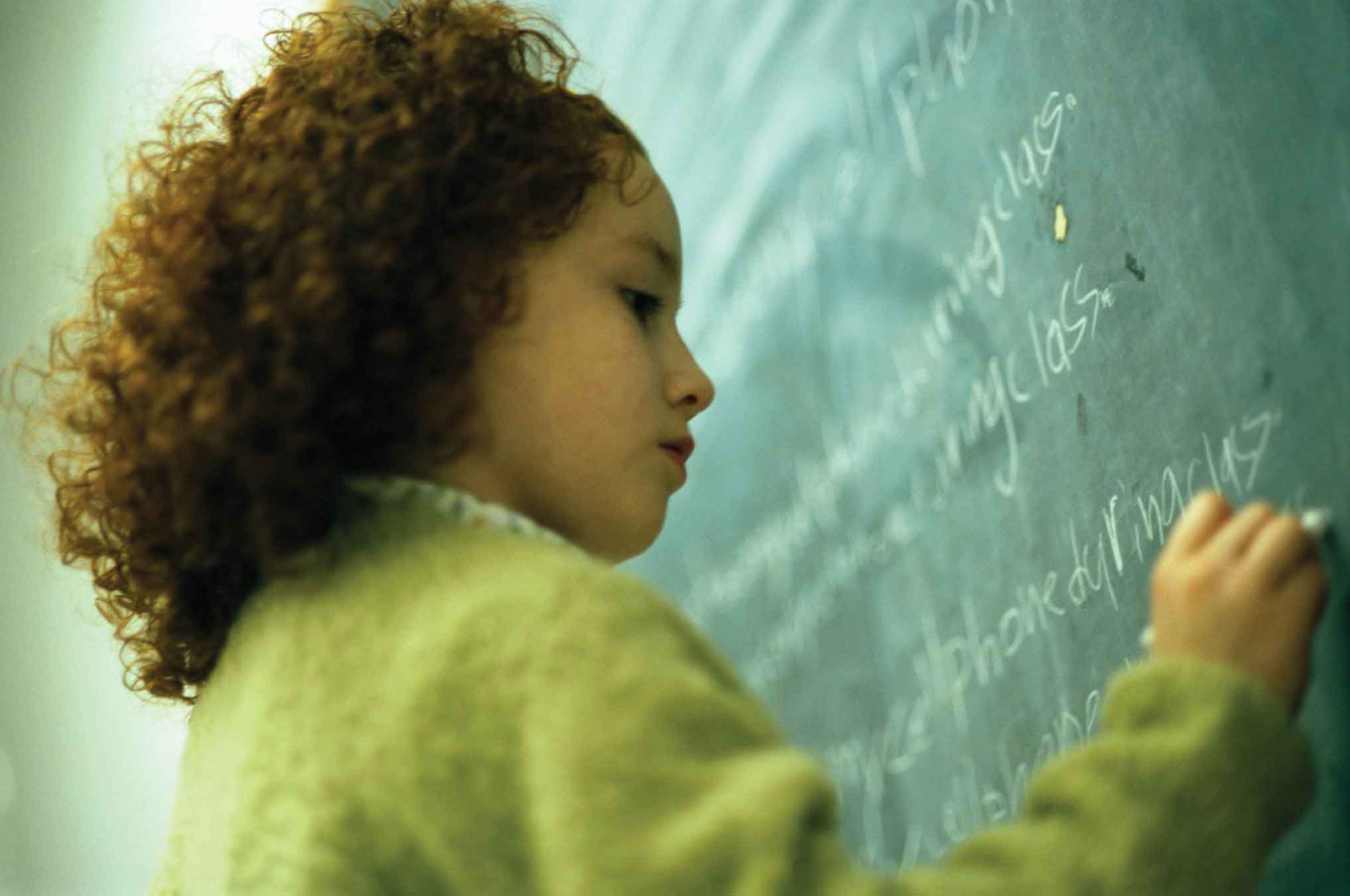Reducing Student and Teacher Dropout in Alabama
This report outlines a research-based approach to school discipline that reduces student and teacher dropout rates while improving academic performance and the overall climate in Alabama schools.
“Do we have a dropout problem? The answer is yes.”
— Dr. Joe Morton, Superintendent, Alabama Department of Education, 2004,
Speaking about Alabama’s Public School Students
To view the full report, click here.
This report outlines a research-based approach to school discipline that reduces student and teacher dropout rates while improving academic performance and the overall climate in Alabama schools. It recommends that schools adopt Positive Behavior Supports, a framework that can fundamentally transform school environments by emphasizing positive behavior and eliminating harsh, zero-tolerance policies that push many vulnerable students out of school and into detention for minor misbehavior.
Twenty-Nine Students — a classroom’s worth — drops out of high school every school day across Alabama. This unacceptably high dropout rate is cause for alarm for our community, economy, and perception of public safety. Of equal cause for alarm is our teacher dropout rate. As Governor Riley noted in his 2007 State of the State address, “Each year, Alabama adds approximately 4,000 new teachers. Yet, 50 percent of them will leave teaching by their fifth year.”
A great number of our teachers and students are dropping out for the same reason: school discipline. Left with few alternatives for handling problems in the classroom, many schools employ discipline methods that research tells us are counterproductive and lead to dropping out: suspensions, expulsions, placements in alternative schools, and referrals to the criminal justice system. School discipline issues are also a major factor in teachers’ decisions to leave the classroom.
But there are tools that our teachers and administrators can use to keep our schools safe and productive so that our students and our teachers stay in school. By implementing relatively simple and cost-effective evidence-based discipline practices such as Positive Behavioral Interventions and Supports (PBIS), educators have the power to transform Alabama’s schools.
Comprehensive school discipline reform will require cooperation among diverse education stakeholders, including state lawmakers, the Alabama Department of Education, local school administrators, school board members, teachers, parents, and students.
Together, we can create safe and orderly classrooms and ensure that our teachers can focus on teaching and preparing our children for the future.
Alabama’s education system stands at a crossroads. No state made greater gains in academic performance than Alabama did in 2007. Our fourth-graders’ recent success on the NAEP reading exam is testament to the many great teachers in our state—those whose unwavering high expectations for our students hold true despite the lack of resources with which most of our schools must contend. Our younger students’ success is also proof of the wise choices that lawmakers and administrators made to support proven programs that gave teachers better tools with which to teach more effectively.
While our younger students’ success should give us hope, our older students’ numbers must make us pause. Our high school graduation rate has ranked us among the bottom five to ten states for the last twenty years. Meanwhile, our school discipline rates consistently rank among the highest in the country. Research tells us that discipline rates and dropout rates are deeply related, and that punishments like out-of-school suspension are actually counterproductive to a student’s success. Research also tells us that discipline issues are a major factor in teachers’ decisions to leave the profession. Our students need to learn right from wrong, but our schools need disciplinary programs that actually reduce problem behavior and improve the learning environment for students and teachers.
Fixing school discipline is not an impossible task. We can do it the same way we’ve been working to improve reading: by giving teachers and schools the tools they need to discipline effectively. We can begin by implementing cost-effective programs like Positive Behavioral Interventions and Supports (PBIS), which has been proven to reduce school discipline problems and increase the graduation rate.
Our students and teachers have only begun to show us what they are capable of achieving. We need to support them with proven methods to keep our schools safe and successful. We don’t need the research to tell us what may happen to our students or our economy if we don’t.
THE STUDENT DROP-OUT PROBLEM
Alabama’s high school graduation rate of 61.3% ranks us 43th in the nation. In 2000, one in four adult Alabamians did not have a high school diploma. The graduation rate of students with disabilities is even more alarming: only 31.9% graduate with a regular high school diploma. The dropout problem has had disastrous consequences Alabama’s for Alabama’s future workforce. The Alliance for Excellent Education estimates that Alabama’s high school dropouts from the class of 2007 would have earned an additional $6.7 billion in their lifetimes had they graduated. Instead, they have a much higher risk of entering the juvenile and criminal justice systems.
A key contributor to the student dropout rate is school discipline. A student is more likely to drop out if she has been suspended or expelled. A student is also more likely to drop out if she has been retained for a grade—an almost inevitable consequence of multiple suspensions.
Every school day in Alabama, an average of 417 out-of-school suspensions are issued, and 7 students are expelled from school. In 2006, the last year for which national data is available, Alabama had the eighth highest out-of-school suspension rate in the nation. And these numbers keep rising. Between the 2000-2001 and 2006-2007 school years, while Alabama’s enrollment increased by 2.1 percent, the number of out-of-school suspensions increased by 33 percent, and the number of expulsions increased by 75 percent. In 2006, African-American students were 3.2 times as likely to be suspended as their White peers and almost 3.8 times as likely to be expelled.
Alabama’s schools need better ways to deal with student discipline. Our children’s academic and personal growth, as well as the growth of our economy, depends on it.
THE TEACHER DROP-OUT PROBLEM
The constant pressure of dealing with school discipline issues is pushing too many of our teachers out of the classroom. In a 2005 national survey of teachers leaving the profession, 44% of teachers, and 39% of highly qualified teachers, cited student behavior as a reason for leaving. According to a 2004 national survey of middle and high school teachers, 76% of teachers indicated that they would be better able to educate students if discipline problems were not so prevalent.
Teacher turnover imposes significant burdens on school administrators: they must find, train, and mentor new teachers out of a shrinking pool of qualified applicants and then repeat the process each year. The departure of experienced teachers leaves our schools with less leadership and guidance for the new teachers hired to fill their void. This continual shuffle can only damage a school’s sense of community and overall performance.
We must provide our teachers the tools and support they need to do what they had hoped to do by joining the profession: teach effectively. Only then can we hope to keep our students and our teachers in school.
ZERO TOLERANCE POLICIES HARM OUR CHILDREN
Some schools see few options available to them and have resorted to a standardized “zero tolerance” approach to school discipline—applying mandatory exclusionary punishments for a wide range of misbehavior, rather than taking circumstances into account in deciding whether and how to punish the child. But zero tolerance policies not only fail to address the underlying causes of misbehavior—they also tend to cause more problems than they solve.
All relevant research, including a recent study by the American Psychological Association, proves that zero tolerance approaches do not result in safer, more orderly classrooms. Studies have found that 30 to 50 percent of suspended students will continue to misbehave, suggesting that suspensions do not deter future disruptive behavior in a significant percentage of students. In one study, researchers concluded that “for some students, suspension functions as more of a reinforced than a punisher.” Dismissal from school is actually a reward for some students for whom school is a constant struggle.
Students suspended from school are much more likely to engage in troublesome behavior. According to the Centers for Disease Control, “out of school” youth are significantly more likely than “in school” youth to become involved in physical fights, carry a weapon, smoke, use alcohol, marijuana and other drugs, and engage in sexual intercourse.
THE SCHOOL-TO-PRISON PIPELINE
Many youths end up in the juvenile justice system because of school-related misconduct—not just for violent behavior. Instead of handling relatively minor disruptive behavior through traditional, non-exclusionary discipline methods like after-school detention and extra assignments, many schools are turning to the juvenile court system. School discipline referrals clog judicial dockets in jurisdictions around the state.
Not surprisingly, involvement in the juvenile justice system, with its disruption of a child’s education, is often a direct pathway to dropping out. Court involvement can hurt kids’ ability to stay in school in several different ways. First, it can make them miss hours of class to go before a judge or weeks of class if they are placed in a detention facility, leaving them hopelessly behind their peers. Second, having to appear in court can be harmful to how students are treated in school and how they think about themselves and their future prospects. And these damaging effects of juvenile justice system involvement are backed up by solid evidence: according to a recent study, a first-time arrest during high school nearly doubles the odds of high school dropout, while a court appearance nearly quadruples those odds.
By reducing the number of students referred to the criminal justice system for minor in-school misbehavior, we can also reduce the number of kids who drop out—and save our state the money it needs to educate our children—without sacrificing school safety.
It’s clear that zero tolerance policies and school discipline practices that depend on suspensions, expulsions, and referrals to the criminal justice system aren’t working. So what is a school to do in order to maintain a safe and orderly learning environment that will be conducive to learning?
ONE STUDENT’S STORY
Joseph was thirteen when he started to experience frequent bullying at school. He felt forced to defend himself when attacked by the other students. Under the school’s discipline rules, all students involved in a fight would receive the same punishment, regardless of who started it. Joseph received several multi-day out-of-school suspensions for these incidents and became increasingly alienated from school. His academic achievement suffered, and he ended up repeating the seventh grade. Joseph eventually dropped out of school.
ZERO TOLERANCE
A random drug search performed on all student cars at an Alabama high school uncovered a scraper and a small pocket knife in the car of one student, a high-achiever with hopes of attending the Naval Academy. The student’s father had used these as tools the night before to replace the metal anchor for the rear view mirror on the front windshield and had left the tools in the car. Under the school’s zero tolerance policy, despite the lack of any evidence that the student intended to bring the items on campus or intended to use them as weapons, the student received 3 days suspension and 45 days at alternative school. The student was also barred from athletics and other extracurricular activities and removed from the National Honor Society.

— Debbie Anderson, Director of Special Education with the Tuscaloosa City Schools
about the Implementation of PBIS in University Place Elementary School.
There is a solution. Evidence-based school discipline practices are available to help teachers maintain a safe and productive learning environment while ensuring that children are removed from school only as a last resort. Every teacher in Alabama can be trained in evidence-based discipline practices, and every child can be disciplined with methods that have been proven to improve behavior. In fact, schools around the state are already implementing evidence-based discipline practices with great success.
Positive Behavioral Interventions and Supports (PBIS) is a research-based method for improving student behavior and creating a safe and productive school climate. PBIS is:
PROACTIVE: All students are taught the critical social skills needed for success. PBIS schools set clear expectations for behavior, acknowledge and reward appropriate behavior, and implement a consistent continuum of consequences for problem behavior. Students with serious or chronic behavior problems receive behavior assessments to determine the causes of their behavior, and these assessments help staff develop individualized interventions and specialized behavior supports.
COMPREHENSIVE: PBIS is employed throughout the entire school, including the cafeteria, the buses, and the hallways. All school personnel are trained in PBIS and are continually supported in implementing it.
DATA-DRIVEN: Schools rely on data, tracked most easily in the form of office referrals, to both develop and modify their PBIS approach (e.g. “When/where do most office referrals occur? Which teachers are referring the most students? Which students are most often referred?”). PBIS teams use this data to design specific interventions to head off problem behavior before it occurs and to confirm that those interventions were effective.
Each student brings a unique personality, background, and behavior pattern to school. PBIS schools implement a range of interventions designed to address the needs of a diverse student body. There are three levels of PBIS intervention:
TERTIARY INTERVENTIONS are specialized, intensive strategies used to address the most challenging students’ chronic academic and behavioral difficulties. Using Functional Behavior Assessments to identify the function of a student’s difficult behavior and devise ways to prevent it, school officials create a behavior support plan and provide counseling to address specific student needs.
SECONDARY INTERVENTIONS address the needs of more challenging students who exhibit difficult behavior that limits their academic and social success. Secondary interventions include behavioral contracts, conflict resolution training, self-management strategies, and “check-and-connect” programs where students check in with a concerned staff member every day.
UNIVERSAL INTERVENTIONS, such as school-wide social skills training curricula and school rule education campaigns, prevent the development of problem behaviors and apply to all students.
SCHOOLS THAT EFFECTIVELY IMPLEMENT PBIS HAVE:
-
Reduced office referral rates (and, consequently, suspension and expulsion rates) by up to 50% per year
-
Increased instructional time as a result of the reduced office referral rates » Improved attendance and school engagement
-
Improved academic achievement
-
Reduced dropout rates
-
Reduced later delinquency and drug use
-
Improved school atmosphere
PBIS is consistent with special education programs. In fact, the Individuals with Disabilities in Education Act (IDEA) encourage the use of PBIS to reduce the need to suspend or expel students with disabilities. The U.S. Department of Education’s Office of Special Education Programs (OSEP) operates a National Technical Assistance Center that promotes PBIS and provides capacity-building information and technical support to states and school districts.
PBIS is currently practiced in approximately 7,100 schools across the country, including a number of Alabama schools. It is recommended or required by statute in three states and is the subject of statewide initiatives or school/university partnerships in all 50 states, including Alabama. PBIS has shown positive effects in elementary, middle and high schools, and has proven to be effective in schools with high percentages of at-risk students.
According to the Alabama Department of Education’s PBIS initiative, “the PBIS program has demonstrated that it can reduce unilateral removals, long-term suspensions, and office discipline referrals.”
HOW PBIS WORKS
These stories of students from around the country illustrate the proven ways in which schools using PBIS address behavioral problems. Sid’s story shows the universal or primary prevention methods that PBIS schools use to reduce behavioral problems in the student body as a whole. David’s story reflects the more intensive, secondary interventions used to address the smaller group of students for whom primary prevention methods do not suffice. Terry’s story demonstrates how PBIS schools address the behavior of the handful of students who require the most intensive, individualized interventions for their serious behavior problems.
SID is a seventh grade student at a middle school in the largest city in his state. For several years it was a school in crisis, with declining test scores, rising rates of students skipping school, an increasing number of out-of-school suspensions, as well as an increase in the rate of juvenile crime in the neighborhood. Sid was one of the students who had more than his share of absences and discipline referrals, and he was suspended three times in the sixth grade. But last year the school began using PBIS. The school’s PBIS leadership team has helped staff make strategic changes. Staff began the school year by establishing a uniform set of expectations for school behavior. Teachers taught these expectations to students, rewarded students who complied, and developed consistent, appropriate consequences for those who did not. Another strategy the staff learned was how to use school-wide discipline data to make intervention decisions when dealing with student misbehavior. Sid and his fellow students have benefited from these changes. This year he has had only two office discipline referrals, and his attendance has been much more regular. The increased time he has been in class also seems to have helped him academically: his achievement test scores have improved from the 30th percentile overall to the 50th!
In the past two months, Sid received two office discipline referrals for misbehaving in the hallways. The PBIS leadership team noted a general increase in office discipline referrals from school hallways. At a staff meeting, it was agreed that, in hallways, the school-wide expectation to “respect others” should be defined as “stay to the right” in hallways and on stairs. They further agreed that during transitions, teachers would stand outside their doors acknowledging students who follow this rule and correcting those who do not. In the two weeks since this procedure went in effect, discipline referrals from the hallways dropped from an average of eleven per day to an average of two. Sid was corrected once for failing to meet the expectation, and since then has received only praise for his behavior in the hallways.
DAVID recently transferred to a new high school that is implementing PBIS. He is sixteen years old and would drop out of school if his mother would permit it. At his former school, David accumulated 28 out-of-school suspensions for such things as truancy and disobedience. These unexcused absences led to an automatic failure of the seventh grade, putting David a year behind his peers.
PBIS has become an integral part of dropout prevention strategies that are being implemented across the nation. At David’s new school, staff has adopted a set of evidence-based practices for helping “at-risk” students like David. David is on a “check-and-connect” plan, which involves checking in every morning with his homeroom teacher to talk about his day, set goals, and review his assignments. At the end of the day he drops by her room to briefly review the day, check homework assignments, and talk about things in general. The goals of this plan are to engage David with school and his teachers and to deter him from dropping out. To measure the plan’s effectiveness, his counselor is keeping track of David’s daily attendance. With the school year almost over, David has had only four absences, and all were excused. He is doing better academically, and has been participating in after-school intramural sports.
TERRY is a fifth grader who was diagnosed with bipolar disorder and has been on medication for the past three years. His school is implementing PBIS, but in spite of primary and secondary prevention efforts, Terry continues to receive office discipline referrals for aggressive behavior toward peers. Early in the school year, he was suspended for threatening another student.
A Behavior Support Team was assembled to address Terry’s problem behavior. A functional behavioral assessment was conducted to identify events that seem to predict his aggressive behavior. Based on this assessment, it was hypothesized that Terry engages in aggressive behavior (verbal threats) in order to escape or avoid being teased by other students. Terry’s Behavior Support Team then developed an individualized behavior intervention plan for him. Part of this plan involves teaching Terry alternative ways to respond to teasing (walking away, reporting to a teacher). Teachers and other school staff watch Terry’s interactions with peers in classrooms, hallways, and other commons areas. When they see him using appropriate alternative responses to peer teasing (his “replacement behaviors”) they give him praise, and Terry gives himself five points on his self-monitoring card. If they see him respond to teasing by making verbal threats, staff immediately correct him (as well as the other student), and Terry deducts five points on his self-monitoring card. Another part of the plan was for a peer mentor (a student with high social status) to accompany Terry around the building during the first two weeks of the intervention. This student (selected daily from a group of trained volunteers) informally coached Terry and other students in using appropriate social skills. After two weeks, the team decided that it wasn’t necessary for the peer mentor to be with Terry at all times. Instead, the students who served as mentors made it a point to interact with Terry in common areas, thereby modeling appropriate social interactions for other peers. It has been six weeks since this plan was initiated, and Terry has received no office discipline referrals for aggressive behavior. Moreover, he has been observed to interact more frequently and positively with peers.
PBIS WORKS
How PBIS has affected my school? Students now have expectations for what their behavior should be at school. For the first time ever at my school, we have continuity among teachers on rules, procedures, consequences, and rewards. Everybody is on the same page! It’s made short-term goals achievable for students to obtain.
Behavioral success for students at my school spills over to academic success at my school. Low discipline referrals means higher academic success! I do not have to spend the majority of my time being the discipline assistant principal.
An ounce of prevention is worth a pound of cure. — Jeremy Madden, Assistant Principal, Fayette County Elementary School Fayette County, AL
The good news is that it is possible to maintain a safe and productive school climate without removing students from the classroom. Out-of-school suspensions, expulsions, removals to alternative schools, and referrals to the criminal justice system can all become a less central part of school discipline by taking the following actions. Our schools and our children deserve nothing less.
1. Encourage your school district to implement school-wide Positive Behavioral Interventions and Supports (PBIS) in every school.
2. Ask your legislator to support full funding for PBIS and other evidence-based school discipline methods.
3. Make behavioral expectations clear to students and provide praise when they meet those expectations.
4. Reserve disciplinary removals for only the most serious and severe of disruptive behaviors, and define those behaviors explicitly.
5. Replace one-size-fits-all disciplinary strategies like zero tolerance with graduated systems of discipline, where consequences are geared to the seriousness of the infraction.
6. Incorporate alternative corrective strategies into your codes of conduct to provide options other than suspensions, expulsions, and removals to alternative schools. Some of these strategies are listed on the next page.
7. Ensure that the Building-Based Student Support Team (BBSST) at your school is meeting its obligation to help students who are struggling academically and/or behaviorally with tutoring, counseling, and other interventions. (See discussion of BBSST teams on page 14.)
8. Encourage collaboration among schools, parents, juvenile justice officials, and mental health officials to develop an array of alternatives for challenging youth.
9. Collect and analyze data on school discipline to better understand and address safety and disciplinary concerns in schools
10. Use this publication and the American Psychological Association’s research on zero tolerance to begin a discussion about effective school discipline in your district.
-
Conference with student to provide him/her with corrective feedback.
-
Re-teach behavioral expectations.
-
Mediate conflict between students or students and staff, and assign appropriate consequences.
-
Create behavior contracts that include expected behaviors, consequences for infractions, and incentives for demonstrating positive behaviors.
-
Student completion of community service tasks.
-
Development of a home/school communication system.
-
Reflective activity about the offense and how it affected the student, others and the schools.
-
Loss of a privilege.
-
Schedule adjustment.
-
Create a check-in/check-out plan for the student with a caring adult in the school.
-
Require daily or weekly check-ins with an administrator for a set period of time.
-
Refer student to counselor, social worker, interventionists, or Building-Based Student Support Team.
-
Arrange for the student to receive services from a counseling, mental health, or mentoring agency.
-
Work with the student to choose an appropriate way for him/her to apologize and make amends to those harmed or offended.
-
After-school detention or high quality in school suspension, during which the student receives assistance with academics and behavioral issues.
In addition to PBIS, other research-based programs can also help create a positive learning environment and address behavior problems without resorting to exclusionary methods like suspension and expulsion. These programs do not replace PBIS; they are usually part of a broader PBIS program. PBIS provides a framework that improves implementation of this programs.
BUILDING-BASED STUDENT SUPPORT TEAMS (BBSST)
Alabama already has an excellent resource to draw upon: Every Alabama School is mandated to have a Building-Based Student Support Team (BBSST). BBSSTs are problem-solving units of school personnel responsible for designing and implementing intensive interventions for students who are struggling academically, behaviorally, or in both areas. BBSSTs need to be strengthened and supported if they are to truly help Alabama’s at-risk children.
CONFLICT RESOLUTION
Fighting is among the most common of disciplinary infractions. Many schools across the nation have begun to implement conflict resolution programs that teach students the attitudes and skills they need to avoid violence, including empathy, perspective and improved communication skills. Students can be trained to act as peer mediators, helping other students naturally defuse conflicts in the halls and classrooms. Also, they can more formally help other students in conflict come to cooperative resolutions in mediation sessions. School wide conflict resolution efforts have shown positive outcomes, including teacher reports of decreased physical violence and increased student cooperation, and lower suspension and expulsion rates.
For more information:
Second Step Violence Prevention Program
Resolving Conflict Creatively
RESTORATIVE JUSTICE
The Restorative Justice approach holds youths accountable to members of the school community for their negative behaviors. Restorative Justice shifts the disciplinary focus away from mere rules of conduct and toward the more global notion of maintaining positive relationships and mutual respect between people in the school community. Restorative Justice encourages a collaborative approach to repairing damaged interpersonal relationships and promoting a positive school community. Restorative justice techniques help repair the damage caused by offending behavior by allowing the victim to express grievances and including all of the people involved to determine what happened and what response might make things better. This process allows people who have harmed others or the community at large to take responsibility for their behavior and for everyone to be involved in creating a safer community.
For more information:
Restorative Justice in Schools Pilot Project
Reassessing School Climate: Restorative Justice and School Discipline
Cassandra W. Adams, Director,
Cumberland Community Mediation Center
Samford University,
800 Lakeshore Drive, Birmingham, AL 35229
(205) 726-4257 (Tel); (205) 726-2397 (Fax)
MENTORING
Mentoring helps alienated students re-connect to school and to the community through tutoring, discussions, field trips, or community service. Evaluations of mentoring programs show that, when done right, they can decrease students’ violent attitudes, raise self-esteem and career aspirations, and improve social skills and academic achievement.
For more information:
National Mentoring Partnership
Anger Management
The purposes of anger management are to assist students in learning how to understand and manage feelings of anger and to provide them with tools to avoid escalating negative feelings that lead to confrontations with others. Effective programs have led to decreases in disruptive and aggressive behavior, increases in pro-social behavior, better social acceptance by peers and increased on-task behavior.
For more information:
Elementary and Middle Schools Technical Assistance Center
BULLYING PREVENTION
Evidence-based bullying prevention programs report significant reductions in bullying, fighting, vandalism, and truancy, along with an increase in general student satisfaction.
For more information:
Bullying Prevention Program
National Bullying Prevention Campaign
ANTI-TRUANCY PARTNERSHIPS
As any teacher knows, exclusionary discipline methods are not the only factors keeping our students out of school. Almost every school in the state also struggles with truancy. Obviously, a critical step in creating a positive learning environment is making sure that all students get the help they need to come to school every day, on time and ready to learn. Truancy reduction programs focus on this specific challenge, and in doing so become part of the spectrum of programs necessary to build healthy schools.
Just as with PBIS, there’s no cut-and-paste approach to truancy reduction: each school and district shapes their program to respond directly to local needs. But effective truancy reduction programs share a few important qualities. First, effective programs involve intense collaboration between schools, families, and other stakeholders. Second, effective truancy programs target the causes of a student’s attendance problems. Instead of simply imposing sanctions for the behavior itself, the best anti-truancy partnerships work creatively and collaboratively to address the underlying factors leading to truancy. Third, truly successful truancy reduction programs do not exclude the children and families who are most in need of help—such as children who are already court-involved. Good programs cannot be limited to the easiest cases.
For more information about a few highly successful truancy reduction programs:
CASASTART (Court-Appointed Special Advocates Striving Together to Achieve Rewarding Tomorrows)
Communities in Schools
Abolish Chronic Truancy
Truancy Intervention Project
Truancy Reduction Program










